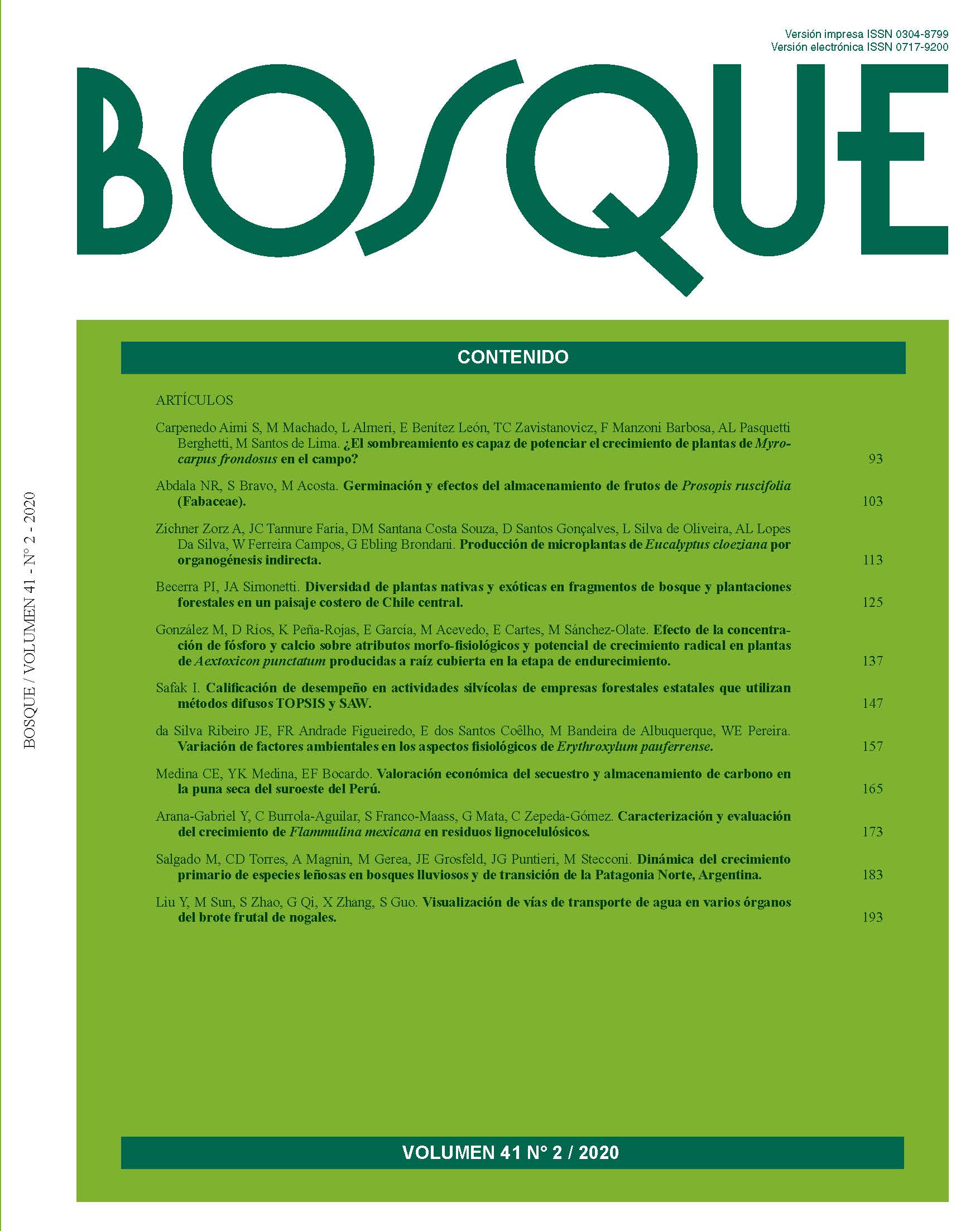Visualización de vías de transporte de agua en varios órganos del brote frutal de nogales
Contenido principal del artículo
Resumen
Para revelar pautas regulares de transporte de agua en brotes frutales de nogal (Juglans regia), se observaron vías de transporte de agua de diversos órganos mediante rastreo de tintes; se determinó: potencial hídrico, estado del agua y tasa de transporte de agua de cada órgano. El potencial hídrico en el pedicelo, peciolo, brote lateral y brote principal fue de -2,59, -2,85, -1,68 y -0,37 MPa, respectivamente. El estado del agua mostró diferencias significativas entre los órganos. La relación entre el agua ligada y el agua libre en el pecíolo fue la mayor (1,93 RBC), seguida por: brote principal, brote lateral y pedicelo. La velocidad de transporte de agua en el pecíolo fue la mayor (3,13 cm/min), seguida del brote lateral, pedicelo y brote principal. Pero la tasa de transporte de agua del brote principal fue la mayor y más alta que la suma de los otros tres órganos. El xilema del peciolo estuvo separado del brote principal; en su parte superior estuvo conectado al xilema del pedicelo y al brote lateral. Durante el período de endurecimiento de la cáscara del fruto, el colorante estuvo en el borde del haz vascular del fruto, pero no en el haz vascular central. No se encontró colorante en yemas principales ni accesorias, en cambio, solo se tiñó una pequeña parte del xilema entre la yema accesoria y el brote principal. Las vías de transporte de agua fueron diferentes para los distintos órganos. El transporte y distribución del agua en varios órganos fueron afectados por su potencial hídrico, la estructura de los tejidos y las necesidades de agua.

